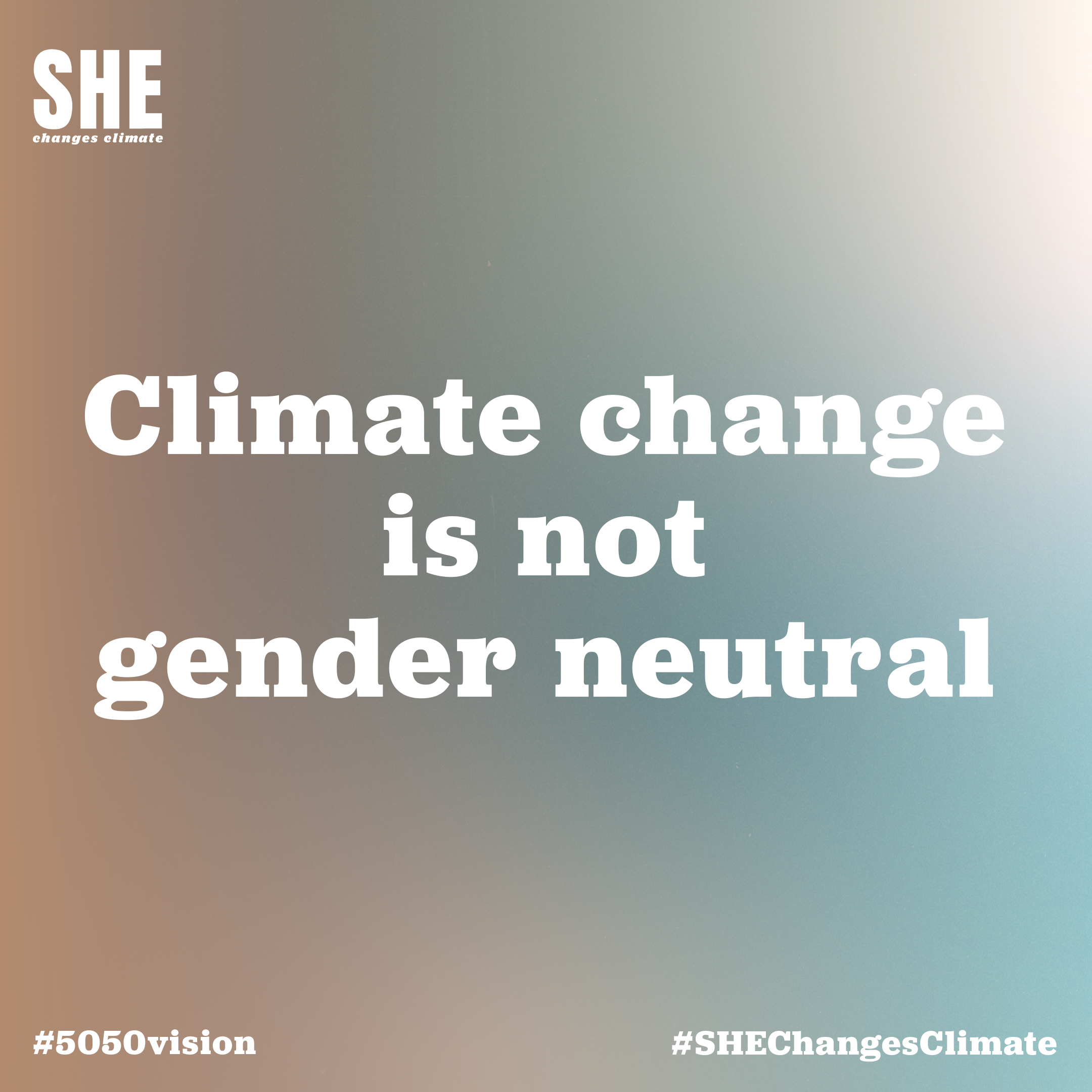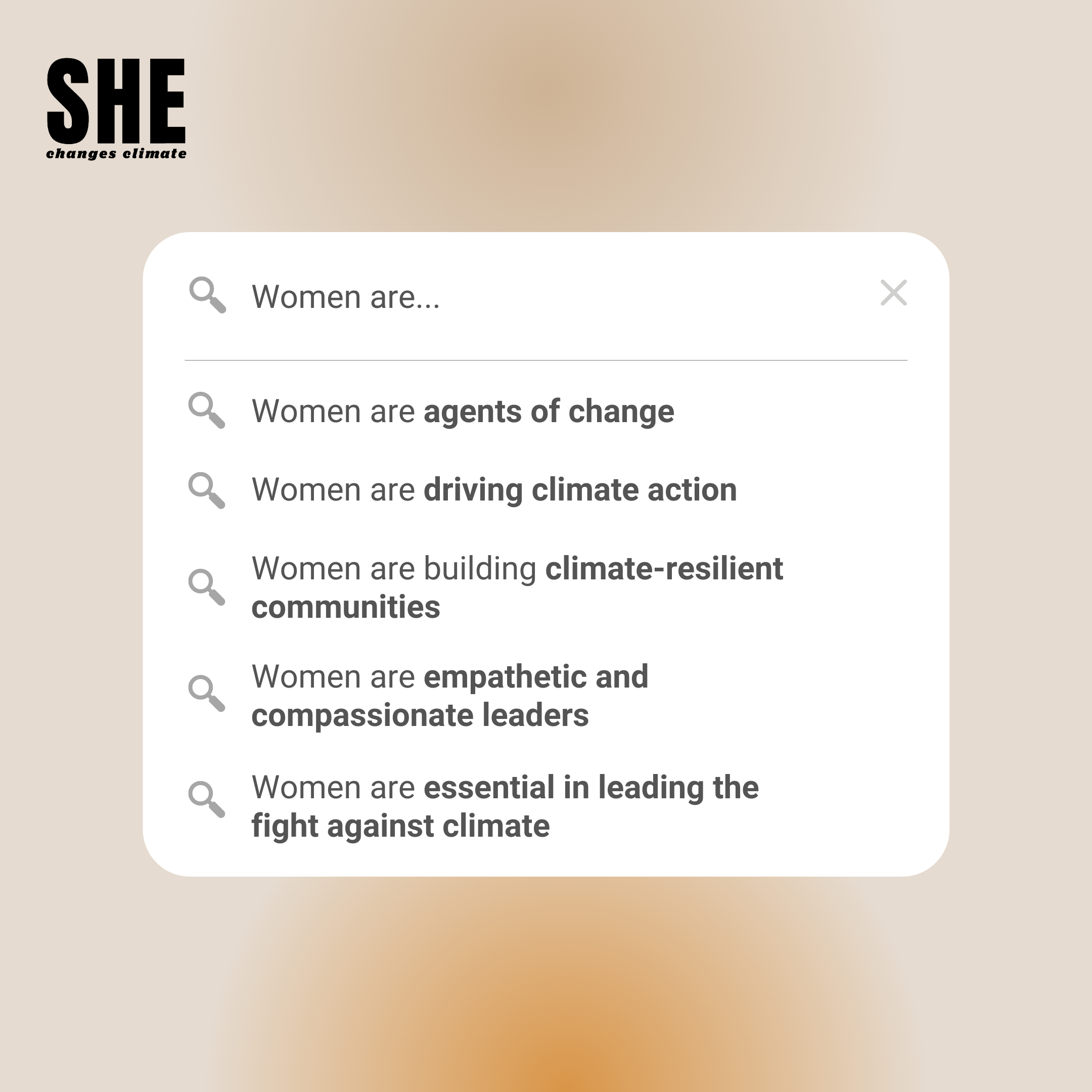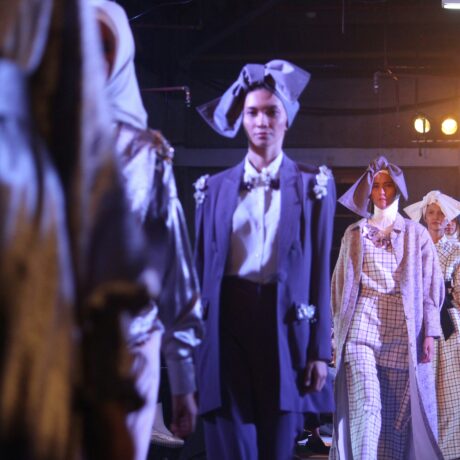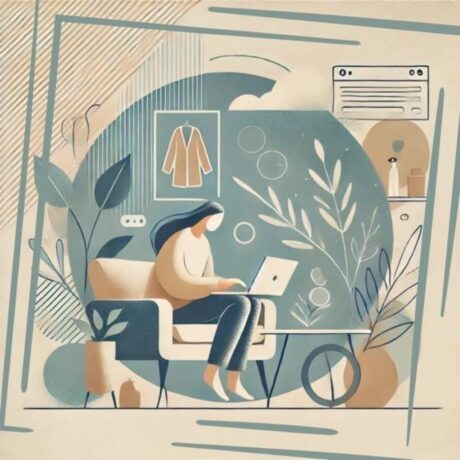Gender equality in climate policy and fashion’s role in COP26
The effects of climate change disproportionately impact women, and women play a fundamental role in our fight against it.
The fashion industry, where the majority of people making our clothes are female while executive leadership roles are still mostly chaired by men, has a colossal impact on the climate too. But despite making up half of the world’s population, women are being denied participation in urgent climate policy discussions that could transform the fashion system.
Later this year, the UK will host COP26, the 26th UN Climate Change Conference of the Parties (COP26). These climate change talks will set the agenda for the future of climate action, but currently, the top of the UK COP26 leadership team is dominated by 75% men. In response, She Changes Climate is campaigning to ensure that we get fair and equal representation of women on the UK leadership team for COP26 by fighting for a #5050Vision; a balance of women and men at the top level of the COP26 leadership team.
In December 2020, the group sent an open letter to the UK Government, calling on them for greater accountability and transparency on male/female parity on the UK COP26 leadership team. The letter has been supported by over 400 female environmental leaders.
“The struggle for climate justice is also the struggle for racial, gender, sexual and economic justice. The gendered impacts of climate change mean we must ensure an equal balance between men and women at all levels, especially within the COP26 senior management team. It is difficult to see how the current predominantly male-led COP26 team will ensure that women’s voices and needs are heard.” – Farhana Yamin, Founder Track 0, Climate Lawyer.
“The climate crisis is a leadership crisis. Research shows that women are vital voices and agents of change for this planet, but we’re too often missing from the proverbial table. More than a problem of bias, this sets us up for failure. To turn away from the brink and move toward a life-giving future for all, we must have true and equal representation.” – Katharine K. Wilkinson, Climate Strategist, Teacher, Author: All We Can Save.
Here, we talk to Antoinette Vermilye, who founded She Changes Climate alongside Elise Buckle and Bianca Gerlinger with the aim to bring diversity and inclusiveness, transparency and accountability to the COP negotiations on climate change.

How will the conversations and negotiations at COP26 impact women when it comes to climate change?
Conversations and negotiations at COP26 will impact women when it comes to climate change because there is a great likelihood that many of the solutions will not have involved the perspectives of women.
For example, after a major hurricane in Florida, the group that decided to focus on rebuilding office space and retail units over healthcare and local childcare centres restricted the possibility of women being able to rejoin the workforce at the same pace as men. More recently, only 3.5% of COVID-19 expert task forces showed gender parity in their membership.
Without input from women, who should also be included as architects of solutions and of climate infrastructure, we risk more of the same and we have seen by the current results that “the same” is not working.
What does climate justice mean to you, and why is diversity of leadership important for achieving this?
Climate justice means inclusive representation of all parties who are going to be affected by climate change. This covers the global ethnic majority, much of whom are missing from the table today. In particular, it affects the most vulnerable people in society – of which women are usually at the low end of income groups pushing them into even more precarious socio-economic situations.
We are seeing in recent years that nature-based solutions or indigenous wisdom, which in the past was marginalised in favour of expensive shiny technological solutions, are proving to be very robust in preventing or mitigating climate change effects. Underrepresentation of women and diversity has played a big role in hurtling down this path. At the 2019 UN Climate Change Conference, only 40 out of 196 delegations were led by women. This needs to change now.
Without diversity of leadership, we look at this crisis through a very narrow lens. Our ask is for more input of the perspectives of women in all their diversity.
Representation doesn’t always equate to change when it’s seen as a tick-box exercise, but a diverse range of voices are clearly lacking in this case. What role does intersectionality play in COP26?
In my view, intersectionality is the linchpin for all climate change solutions. Our current climate crisis is also a product of social and racial injustice and exploitation. It doesn’t take us a lot of research to uncover the historical layers of systemic injustice that have led to where we are today. And all this underlines the vital importance that women in all their diversity must be listened to and proactively sought out.
The fashion industry also has the power and the responsibility to take action on climate change, while the majority of people who make our clothes are women. With fashion so rarely included in climate policy talk, could female leadership help get it on the COP26 agenda?
There have been many issues that have been ignored on the COP26 agenda. After all, many of the materials used in the fashion industry require major usage of water and natural resources. Studies show that women tend to take a more holistic approach in the areas over which they are responsible, such as careful water resource management or planting diverse crop varieties for overall soil health. Women are better at enforcing conservation rules. All these may seem small and insignificant, but on a global scale, these are essential steps that we must all be taking right now.
In addition, let us not forget the impact of synthetic fabrics made from fossil fuels which are a very large contributor to greenhouse gas emissions from extraction refinery to manufacture, transportation and eventually landfill where much of our cheap fast fashion ends up. This is a link between fossil fuels and the fashion industry that has been ignored. Our hope is that everyone who supports the 50:50 vision will also be pushing for fashion and its impact on the climate to be included on the COP26 agenda.
What has the campaign achieved so far, and what’s next in terms of progressing towards a 50:50 vision at COP26?
On a practical level, we have had talks with the COP26 team and provided proactive solutions that involve creative and tangential thinking to resolve the problem – in much the same way that we need these same qualities for climate change solutions.
Our asks are threefold:
- Perspective: we want women’s perspectives included in the framing and narrative of the COP26 agenda at the highest level. In March, we submitted a long list of very capable women who could be considered for positions at the top of the UK COP26 leadership team.;
- Perception: even if the UK civil service structure is based on a strict hierarchical system, it is vital that both men and women are seen on an equal playing field. So rather than a deputy director and director title, we would rather both public titles as co-directors (regardless of the real title). This has a subliminal effect on how people perceive women as equal players where it really matters.
- Space: we need to see more women speaking out – if only to forge the way for younger women and our daughters to follow. If you don’t see it, you can’t be it. Let’s start changing that!
Since the launch of She Changes Climate in December last year, we have become a voice that amplifies the work of so many other groups focusing on gender equality and or climate justice. Our role has transformed from a specific ask of the UK COP26 leadership team to a broader mandate of insisting more women are included in equal numbers at all climate negotiations.
The biggest achievement of She Changes Climate is probably just in its title: As women, we can all be part of changing the climate crisis. Speak up, talk to your friends and family, and join us.

Further reading
She Changes Climate Digital Toolkit
Garment workers and climate change: The socioeconomic link
International Women’s Day: Women’s rights and the environment in fashion








